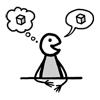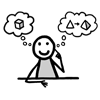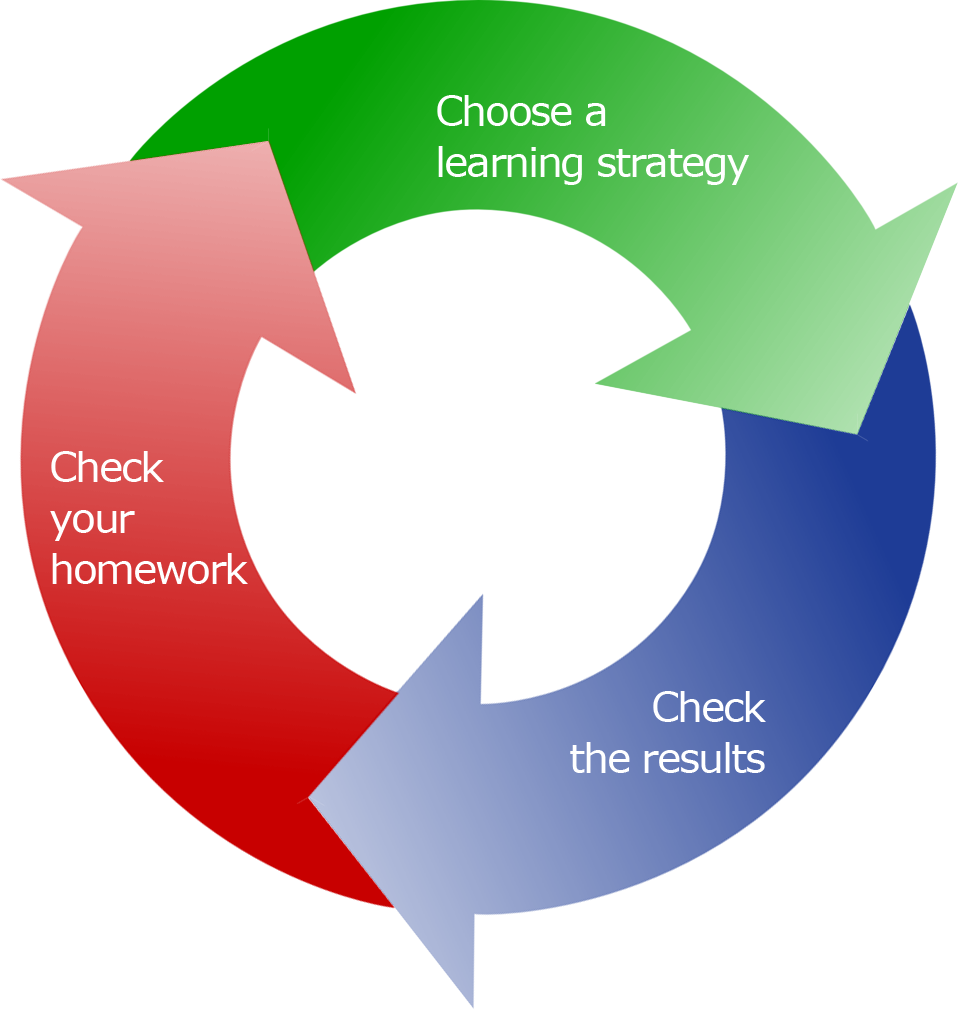The term learning strategy is often used and well known among teachers. They are used so you can remember better, understand better, and to control your own learning process along the way. There are many kinds of effeective learning strategies: some are useful for planning, others for effective reading, or how to review your own performance.
Learning strategies are strategies for planning, implementing, assessing and streamlining one’s own learning.
Knowing the purpose of what you must learn will help you pick the right tool for the job. When you are learning how to do something, it’s not very useful to use flashcards. Check out the four cognitive categories below, to help you select an effective learning strategy for your goal.
Remember: Facts
 There are many strategies available for free to help you more effectively remember facts such as the multiplication tables, remembering when the constitution was signed, or knowing the definition of a term.
There are many strategies available for free to help you more effectively remember facts such as the multiplication tables, remembering when the constitution was signed, or knowing the definition of a term.
During the first years of school, there is a lot of focus on remembering. The fact is (pun intended) that facts are used in other cognitive areas: you’ll use these facts when you’re thinking about things in another way. A simple strategy for this cognitive category is Chunking.
Training: Being able to do something
 Training means doing exercises with varying information, but in given procedures and situations; you’ll recognize such situations afterwards. The tasks that you’ll find on your tests, will check that you are proficient, and they will be quite similar to the exercises you’ve practiced with. You will recognize the situations and know how to proceed.
Training means doing exercises with varying information, but in given procedures and situations; you’ll recognize such situations afterwards. The tasks that you’ll find on your tests, will check that you are proficient, and they will be quite similar to the exercises you’ve practiced with. You will recognize the situations and know how to proceed.
Transfer: Selecting and combining procedures and relevant facts
 If you find yourself facing a new situation, which you did not practice, then you will have to use methods from other examples, or perhaps combine some procedures, to arrive at a solution.
If you find yourself facing a new situation, which you did not practice, then you will have to use methods from other examples, or perhaps combine some procedures, to arrive at a solution.
You can train your imagination to become good at this.
Insight: Understanding how things are put together
 Insight is about understanding the why, and this goes far deeper into the material than just knowing the what and when. You make connections with completely different topics, understand the context, and solve problems that go completely beyond what you were shown in class.
Insight is about understanding the why, and this goes far deeper into the material than just knowing the what and when. You make connections with completely different topics, understand the context, and solve problems that go completely beyond what you were shown in class.
Metacognition
 Using learning strategies will be most effective when you have several to choose from, so that you can choose and use them consciously: check if the one you use actually fits the subject matter and you yourself.
Using learning strategies will be most effective when you have several to choose from, so that you can choose and use them consciously: check if the one you use actually fits the subject matter and you yourself.
If you do this, you have focus on your own learning process, and you’re monitoring it.
You’ll need to:
- know what to learn,
- have an idea how it would be easiest for you to make that happen,
- Check how it really went.
You should check this often: the sooner you know how you’re doing, the sooner you can adjust it so you achieve maximum efficiency (in other words: you’ll have more time for other things).
Example: If you want to memorize the notes of the guitar strings, E-A-D-G-B-E, you could use the familiar phrase: Eat All Day Get Big Easy. If it turns out that this does not help you, you can choose another strategy. Maybe it works better for you to sing the notes?
For this learning goal it may be tempting to understand the why of it – in which case you won’t have to memorize the acronym, but there are different learning strategies that suit the different cognitive levels (Remember, Training, Transfer, Insight). It is best to try some strategies that fit the cognitive level of the goal, and not work around the challenge.
When you are going to memorize the multiplication tables, you should know the multiplication tables and not multiplication – even if these have everything to do with each other.